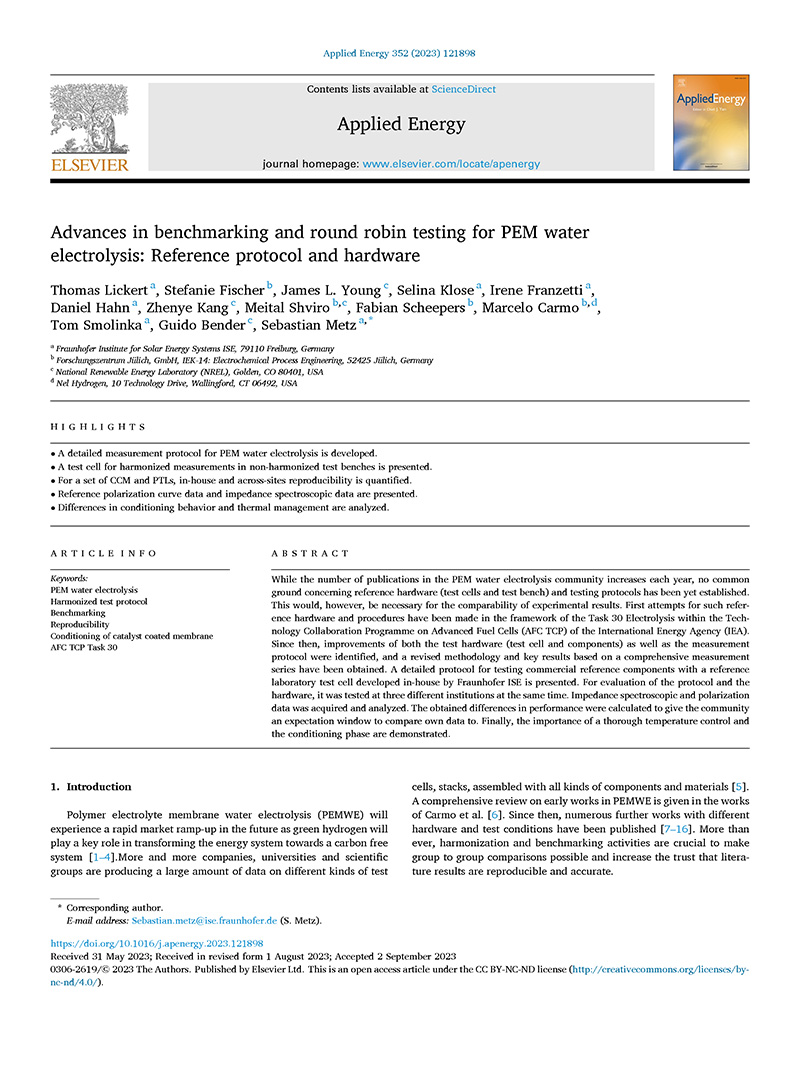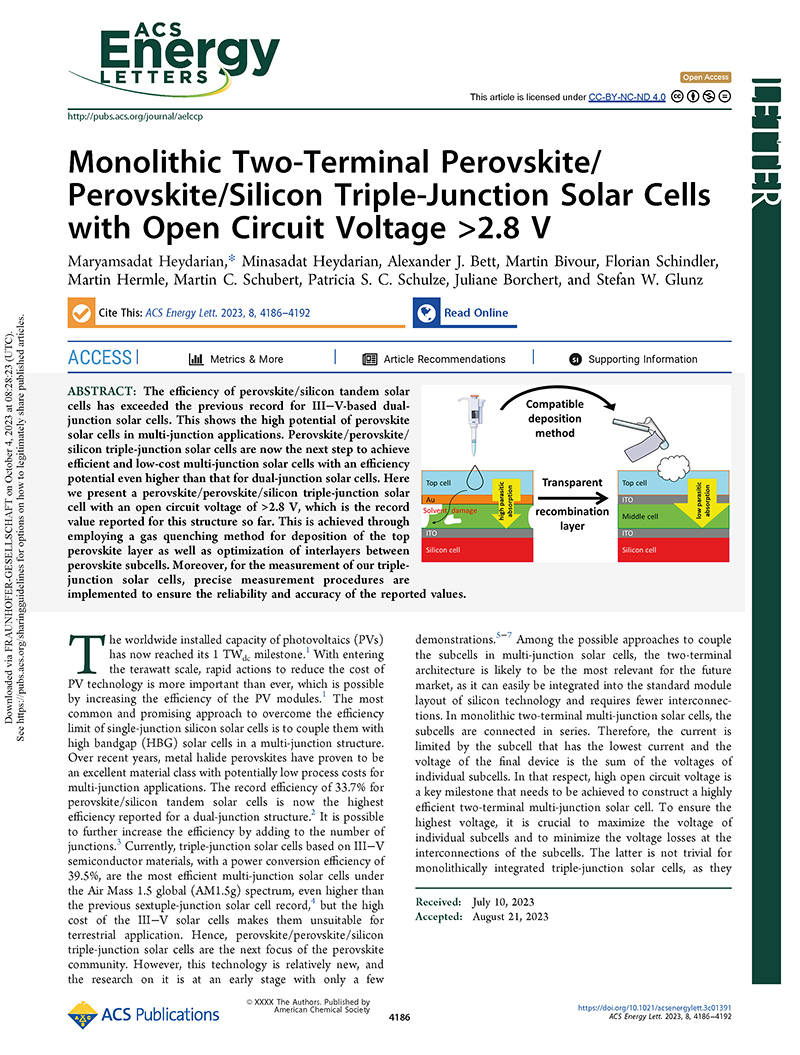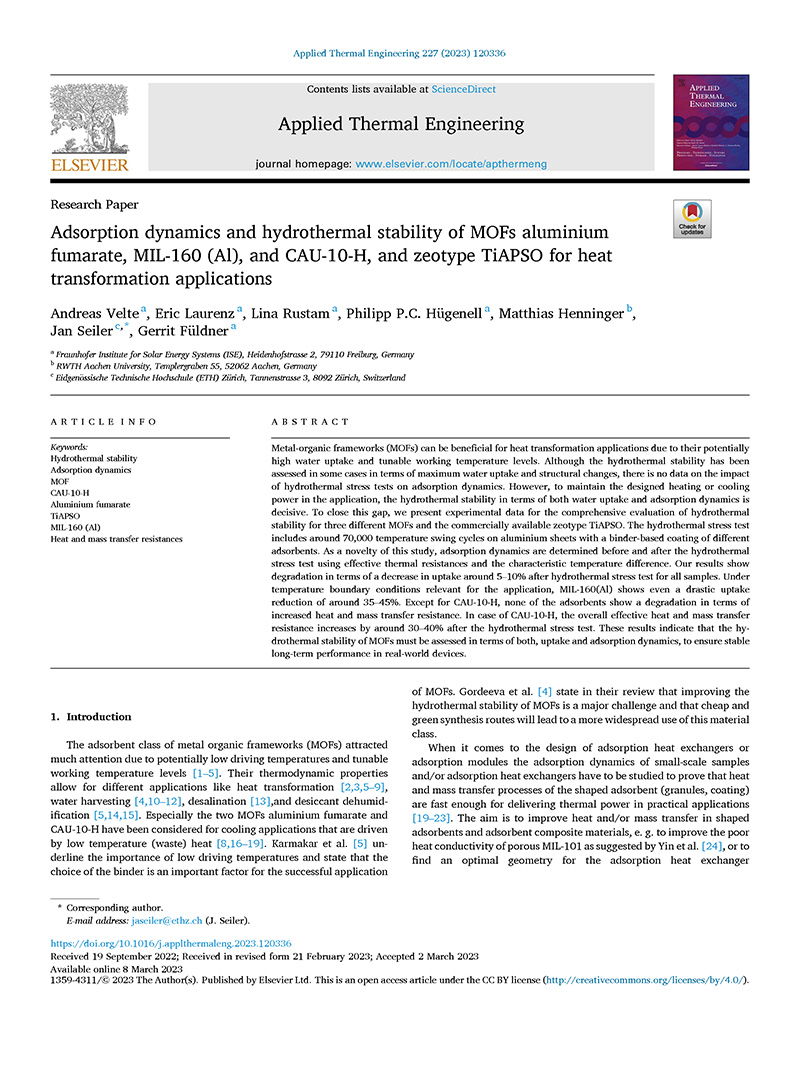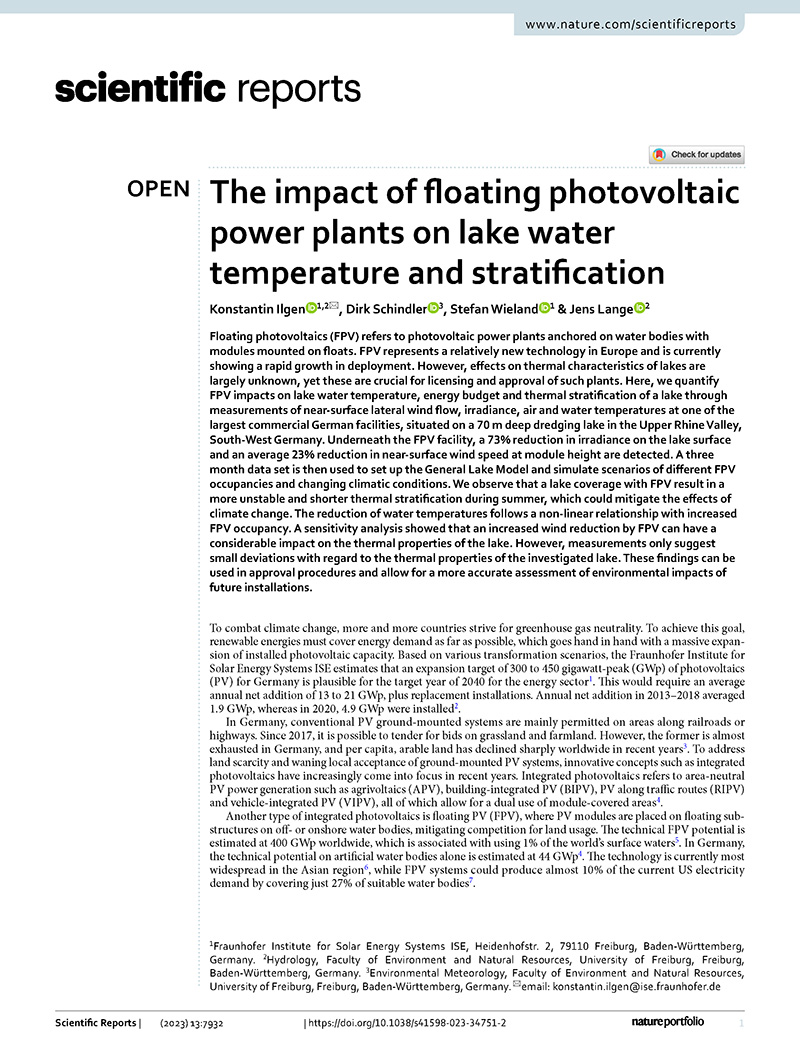Applied Energy | Volume 352 | 16. September 2023 | 121898
Thomas Lickert, Stefanie Fischer, James L. Young, Selina Klose, Irene Franzetti, Daniel Hahn, Zhenye Kang, Meital Shviro, Fabian Scheepers, Marcelo Carmo, Tom Smolinka, Guido Bender, Sebastian Metz
Despite an increase in scientific publications on PEM water electrolysis, no common basis for reference hardware, such as test cells and test rigs, as well as test protocols exists. This is, however, crucial in order to compare experimental results. This paper shows how the gap could be filled: A detailed protocol for the testing of commercial reference components is presented. This protocol was carried out on a reference test cell of Fraunhofer ISE. The protocol and the testing hardware were put to test simultaneously at three different institutes. Impedance spectra and polarization data were collected and analyzed. The differences in measured performance were analyzed in detail, and further actions on how to reduce these deviations are discussed.



